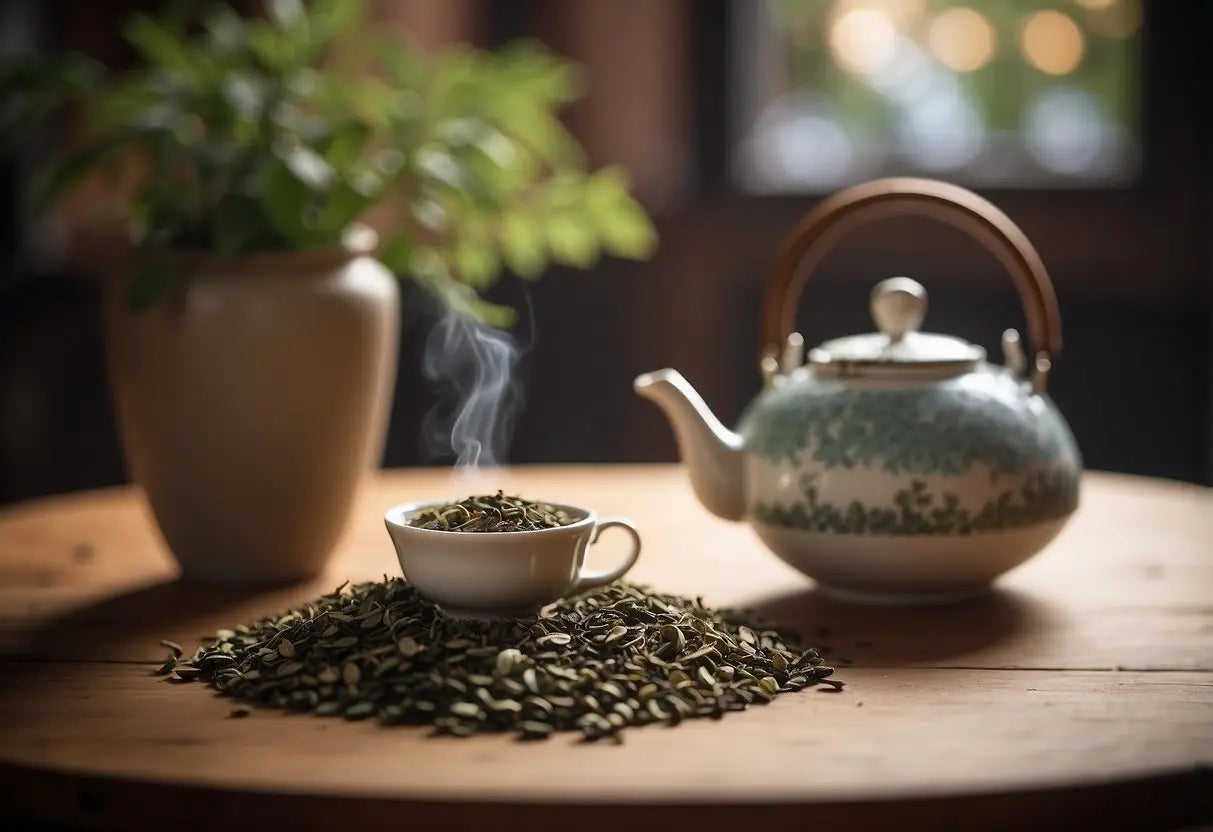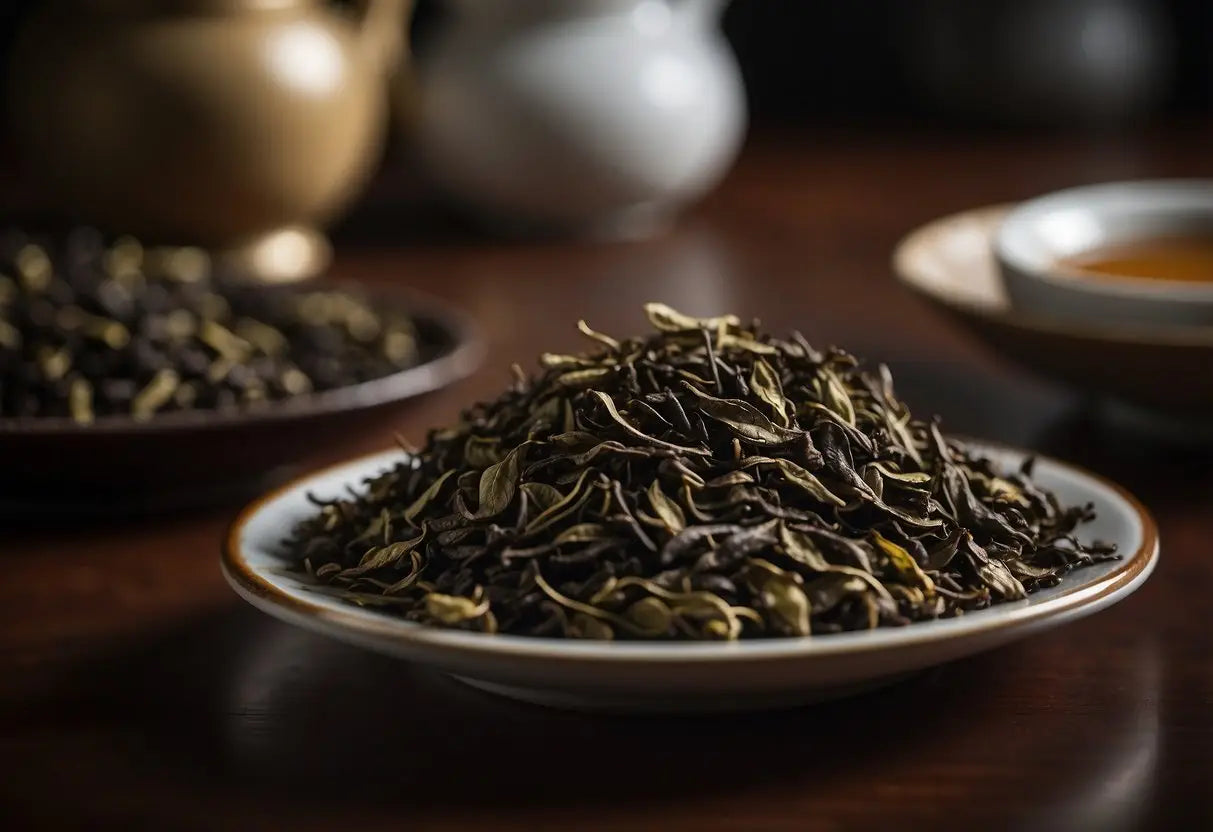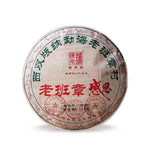How Long Does Pu Erh Tea Last
Shop our Pu Erh Tea collections!
Pu-erh tea is a unique variety of fermented tea originating from Yunnan, China.
It comes in two main types: raw (sheng) and ripe (shou). The raw variety is naturally fermented over time, while the ripe version undergoes a quicker, artificial fermentation process.
Bestsellers
Pu-erh tea is often sold in compressed forms. You might find it as cakes, bricks, or even small, individually wrapped lumps called "tuo cha."
The aging process is a key characteristic. Pu-erh tea can improve with age, much like fine wine. Storage conditions significantly impact its quality.
Good storage involves proper ventilation, stable temperatures, and controlled humidity. Avoid strong odors and direct sunlight that could spoil the tea.
Pu-erh tea has historical and cultural significance. It was traditionally used for its supposed health benefits and symbolic value in various ceremonies.
The flavor profile can be complex. Younger raw Pu-erh tends to be astringent and grassy, while older varieties develop earthy, smooth notes. Ripe Pu-erh is typically rich, mellow, and sweet.
Your choice between raw and ripe depends on your taste preference and patience for aging.
Shelf Life Factors for Pu-erh Tea

The longevity of Pu-erh tea is influenced by multiple factors such as the storage conditions, the quality and processing of the tea, and the integrity of its packaging. A tea’s shelf life can vary widely based on these considerations.
Storage Environment
Store Pu-erh tea in a cool, dry place away from strong odors and direct sunlight.
Humidity should be controlled to prevent the tea from becoming damp, which can lead to mold growth. Ideal humidity levels are between 60% and 70%.
Temperature should remain consistent, ideally below 25°C (77°F). Fluctuations can cause degradation in quality.
Ensure that the tea is kept in a well-ventilated area, allowing for adequate air circulation to help it age properly without becoming stale.
Lao Ban Zhang
Tea Quality and Processing
Higher-quality Pu-erh tea generally has a longer shelf life.
Grades of tea and the leaves’ maturity play a significant role; young leaves may age differently than older, more mature leaves. Processing techniques, such as proper fermentation and drying, are crucial.
Properly fermented Pu-erh can improve with age, sometimes over decades, whereas poorly processed tea may degrade quicker.
Ripe and raw varieties of Pu-erh also age differently; ripe Pu-erh is already fermented, while raw Pu-erh continues to age and develop its flavor profile.
Packaging Integrity
Packaging plays a crucial role in preserving Pu-erh tea's quality.
Use airtight containers to protect against air and moisture exposure. Traditional materials like paper and bamboo can effectively allow some air exchange while maintaining protection.
Avoid plastic or foil packaging that can trap smells and fail to protect the tea’s flavor nuances.
Inspect packaging regularly for any signs of damage or contamination, and reseal it well after each use to minimize air exposure.
Optimal Storage Conditions

To maintain the quality of Pu-erh tea, store it in an environment that mimics its natural aging process.
Temperature: Keep the tea at a stable temperature, ideally between 20-30°C (68-86°F). Avoid extreme heat or cold.
Humidity: Maintain a humidity level of around 60-70%. Too much moisture can lead to mold, and too little can dry out the tea leaves.
Airflow: Good ventilation is crucial. Stale air can negatively impact flavor development. Ensure the storage area has a gentle circulation of air.
Light Exposure: Protect the tea from direct sunlight. Light can degrade the tea leaves. Use opaque containers or store in a dark place.
Odors: Keep it away from strong odors. Pu-erh tea absorbs surrounding smells easily, which can alter its taste.
Containers: Use breathable materials. Paper wrappings, wooden boxes, or unglazed clay jars are ideal. Avoid plastic or airtight containers as they can trap moisture and affect aging.
Shelf Placement: Place the tea on a stable, elevated shelf. Avoid floors, which may have fluctuating temperatures and moisture levels.
Following these guidelines helps ensure that your Pu-erh tea retains its rich, complex flavors for years.
Signs of Aging and Maturation

Pu-erh tea undergoes significant changes as it ages.
In the early years, you may notice a raw or "young" taste. This can be quite sharp and astringent. The aroma will also be more pungent, reflecting the fresh nature of the tea.
As the tea matures, the taste profiles become more complex. The astringency diminishes, giving way to smoother, richer flavors. You might detect earthy, woody, or even sweet undertones.
Another sign of aging and maturation is the change in color. Young Pu-erh tea tends to be a bright, amber or light brown. Over time, it darkens gradually to a deep, reddish-brown.
The texture of the leaves is also telling. Fresh Pu-erh leaves are pliable and soft. As it ages, the leaves become thicker and more resilient to breaking.
Look out for changes in aroma. Initial strong, fermented scents mellow down over the years. You can detect a more subdued, yet complex array of fragrances, increasing the depth of the tea's character.
Document these signs regularly. This can help you track the progression and predict the ideal time for consumption.
Identifying Spoilage
Smell: Spoiled pu-erh tea often has a musty or sour odor. Fresh pu-erh should smell earthy but clean.
Appearance: Mold growth can indicate spoilage. Look for unusual white, blue, or green spots on the tea leaves.
Taste: If the tea tastes off, with sour or moldy flavors, it may be spoiled. Properly stored pu-erh should taste rich and smooth.
Color Changes: Some changes in color are natural as pu-erh ages. However, unexpected or uneven discoloration might signal spoilage.
| Signs of Spoilage | Description |
|---|---|
| Musty Odor | Unpleasant, sour or moldy smell |
| Mold Growth | White, blue, or green spots |
| Sour Taste | Off flavors, not smooth |
| Uneven Color | Unexpected discolorations |
Storage Conditions: Ensure your tea is stored in a cool, dry place. Excess moisture can lead to spoilage.
Regularly inspect your pu-erh tea. Detecting spoilage early helps maintain the quality and safety of your tea.
Extending Shelf Life Through Proper Care
To maximize the shelf life of pu erh tea, it's crucial to store it under the right conditions.
Temperature: Keep your pu erh tea in a cool, stable environment. Avoid temperature fluctuations which can affect the aging process.
Humidity: Maintain moderate humidity levels, ideally between 60-70%. Extremely dry or humid conditions can spoil the tea.
Ventilation: Ensure proper airflow to allow the tea to breathe. Storing it in a breathable container, such as unglazed clay jars or paper wrappers, is recommended.
Light Exposure: Keep the tea away from direct sunlight. Exposure to light can degrade its quality over time.
Odors: Pu erh tea absorbs odors easily. Store it away from strong-smelling substances.
Storage Containers: Use specialized containers like clay pots, bamboo containers, or paper wrappers. Avoid plastic and metal containers as they can alter the tea’s taste.
Regular Inspection: Periodically check the tea for any signs of mold or unwanted changes.
Adhere to these guidelines to keep your pu erh tea fresh and enhance its aging process.
Impact of Aging on Flavor and Value

As Pu-erh tea ages, its flavor undergoes noticeable changes. Fresh Pu-erh often possesses a robust and astringent taste. Over time, the tea mellows, developing richer, more complex flavors. This gradual transformation enhances the tasting experience.
Older Pu-erh tea tends to be smoother and less bitter. The earthy, woody notes become more pronounced, sometimes accompanied by hints of sweetness. Each year of aging adds unique characteristics, making the tea more desirable to enthusiasts.
The value of Pu-erh tea generally increases with age. Collectors and connoisseurs seek out well-aged Pu-erh for its matured taste. Market prices can vary significantly, but aged tea typically commands higher prices. Proper storage conditions contribute to maintaining and even improving the tea's quality over time.
Here’s a quick look at the flavor and value change over time:
| Age (Years) | Flavor Characteristics | Value |
|---|---|---|
| 1-5 | Robust, astringent, young | Low |
| 6-10 | Mellowing, richer notes, beginning of complexity | Moderate |
| 11-30 | Smooth, complex, earthy, woody | High |
| 30+ | Highly smooth, complex, unique flavors | Very High |
Fluctuations in market demand may also impact the value of aged Pu-erh tea. Careful aging and storage ensure the tea reaches its full potential, both in flavor and monetary worth.
In summary, aged Pu-erh offers a unique tasting journey while often becoming more valuable, making it a sought-after item for both drinking and investment.
Brewed Pu-erh Tea Longevity

Brewed Pu-erh tea, like other teas, has a limited lifespan.
Room Temperature: If left at room temperature, it's best to consume brewed Pu-erh tea within 8-12 hours. After this time, bacterial growth may occur.
Refrigeration: Extend its life by storing in the refrigerator. In a sealed container, it can last up to 3 days. Make sure the container is airtight to prevent odors from affecting the tea's flavor.
Quality Factors: The longevity of brewed Pu-erh also depends on the initial quality of the tea leaves and the cleanliness of the brewing equipment. High-quality leaves and clean equipment can help maintain the tea's drinkability for a longer period.
Indicators of Spoilage: Look for signs such as sour smell, changes in color, or unusual taste. If any of these signs are present, it's best to discard the tea.
Brewed Pu-erh tea does not last indefinitely, and its shelf life can be influenced by several factors. Always store your tea properly and pay attention to any indications that it may no longer be safe to consume.
← Older post Newer post →











